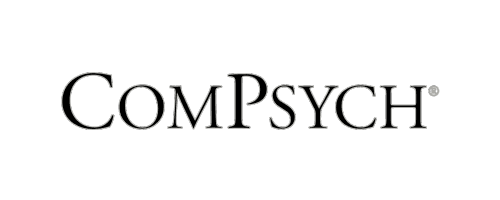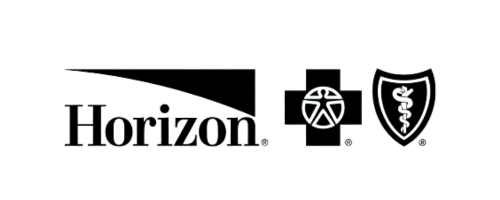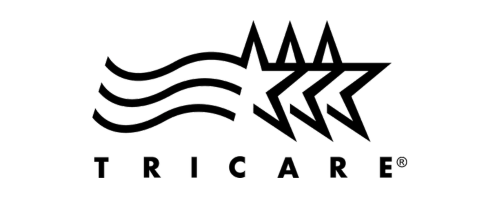Introduction
Dialectical behavioral therapy is for people who struggle with emotional and behavioral challenges. But, it has also shown positive outcomes in treating other conditions.
Some of these conditions include:
- Depression
- Anxiety
- Substance use disorder
A study showed the effectiveness of DBT in treating BPD. It did so by comparing a 28-day transitional DBT program for some patients.1

Emphasis on Acceptance and Behavior Changes
This type of therapy emphasizes acceptance and change of behavior. Most individuals ask “what is dialectical behavioral therapy used for?” DBT recognizes that people may have difficulty managing their emotions. This struggle happens while striving for personal growth. It helps to address this dialectical tension.
DBT helps people build resilience and develop healthier coping mechanisms. It leads to a more fulfilling life. This form of treatment is available at mental health facilities such as True Life Care.
Definition of Dialectical Behavioral Therapy (DBT)
Several people ask “what is dialectical behavioral therapy used for?” DBT is a comprehensive therapeutic approach. It’s been proven effective in treating various mental health conditions.
DBT combines elements of cognitive-behavioral therapy with mindfulness techniques for effective treatment. It emphasizes the balance between acceptance and change.
What is Dialectical Behavioral Used For?: Goals of Treatment
The main goal of DBT is to provide patients with the necessary skills to regulate their emotions. It also helps to improve interpersonal relationships and enhance their quality of life. DBT accomplishes this through a structured approach. The approach involves both individual therapy sessions and group skills training. It’s available at mental health facilities such as True Life Care. Some researchers found that at the end of a 12-week DBT treatment program, several people experienced a reduction in confusion.2
What Happens in DBT?
In DBT, the therapist and client work together to identify problematic behaviors. Here, they explore underlying emotions and develop strategies for change.
This process often includes building skills in emotional regulation and distress tolerance. It is important to note that trained mental health professionals usually provide DBT.
What is dialectical behavioral therapy used for, and what does it require? DBT takes specialized knowledge and expertise. It’s needed to guide patients through the therapy process.
Comparison to Other Forms of Therapy
It is vital for patients to ask “What is dialectical behavioral therapy used for?” before beginning treatment. DBT is a unique therapeutic approach. It distinguishes itself from other forms of therapy in several ways. Below are some comparisons between DBT and other forms of treatment:
Solution-Focused Brief Therapy (SFBT)
SFBT is a future-oriented therapy. It also aims to help people find solutions to their current challenges. DBT focuses on both acceptance and change. DBT recognizes that people may have difficulty managing their emotions and behaviors. It incorporates specific skills training to build effective coping strategies.
Acceptance and Commitment Therapy (ACT)
ACT shares some similarities with DBT in terms of acceptance and mindfulness. But, they have different origins and applications.
ACT focuses on accepting one’s experiences and committing to valued actions. But, DBT has a more comprehensive and structured approach.
Skills Training
Most people ask “what is dialectical behavioral therapy used for?” The approach includes specific skills training for:
- Emotional regulation
- Distress tolerance
- Interpersonal effectiveness
Cognitive-Behavioral Therapy (CBT)
A common question is “what is dialectical behavioral therapy used for?” DBT incorporates elements of CBT, but it also integrates more components. These components focus on:
- Acceptance
- Validation
- Mindfulness
DBT’s Emphasis on Emotional Regulation
While CBT focuses on thoughts and behaviors, DBT places emphasis on emotional regulation. It also focuses on interpersonal effectiveness.
DBT also offers specific skills training groups. These training groups are a distinctive feature not found in traditional CBT.
Psychodynamic Therapy
DBT differs from psychodynamic therapy in terms of its focus and time frame. Psychodynamic therapy explores the person’s unconscious and past experiences. It uses these experiences to gain insight into present-day difficulties.
In contrast, DBT concentrates on building skills for managing current challenges. It emphasizes present-moment awareness. DBT is a shorter-term therapy compared to psychodynamic therapy. Psychodynamic therapy is a longer and more open-ended therapy.
Person-Centered Therapy
Person-centered therapy emphasizes the importance of the therapeutic relationship. It also emphasizes the person’s unconditional positive regard. But, DBT emphasizes both acceptance and change. Several people ask “what is dialectical behavioral therapy used for?” DBT recognizes that change is necessary for growth while validating and accepting people’s experiences and emotions.
What is Dialectical Behavioral Therapy Used For in Wellness Recovery?
The following are some of the primary goals and objectives of DBT in mental health facilities such as True Life Care.
Enhancing Emotional Regulation
Some people ask “what is dialectical behavioral therapy used for?” One of the primary goals of DBT is to help people regulate their emotions more effectively. This involves learning skills to identify and label emotions. It helps to understand their functions and develop healthier ways to manage intense emotions. The objective is to reduce emotional vulnerability and promote emotional stability.
Encouraging Mindfulness
Mindfulness is a crucial component of DBT. It is vital to know the goals of the therapy and ask “what is dialectical behavioral therapy used for?” The therapy emphasizes present-moment awareness. It also emphasizes non-judgmental observation of thoughts and emotions. The objective is to help individuals develop a greater sense of self-awareness. It also helps reduce judgment and cultivate a more balanced perspective.
Decreasing Problematic Behaviors
DBT aims to reduce self-destructive or harmful behaviors. These harmful behaviors include:
- Self-harm
- Suicidal ideation
- Substance abuse
- Impulsive actions
The objective is to replace these behaviors with healthier alternatives through skill-building. It also improves emotional regulation.
Increasing Self-Respect and Self-Validation
DBT emphasizes self-acceptance and self-validation. The therapy encourages people to develop a compassionate and non-judgmental attitude toward themselves.
The objective is to improve self-esteem and self-worth and foster a sense of self-empowerment.
Achieving a Life Worth Living
DBT aims to help people lead meaningful and fulfilling lives aligned with their values. This therapy focuses on supporting patients in setting goals. It helps to develop strategies to achieve those goals and create a sense of purpose.
Developing Distress Tolerance
DBT aims to equip people with skills to tolerate and navigate distressing situations. The objective is to help them build resilience and develop effective coping mechanisms. It helps them face challenging circumstances or overwhelming emotions.
Improving Interpersonal Effectiveness
DBT focuses on enhancing interpersonal skills. It helps to promote healthy and fulfilling relationships.
Patients learn:
- Effective communication strategies
- Assertiveness
- Setting boundaries
It also teaches them to resolve conflicts in a constructive way. The objective is to improve the quality of interactions and develop satisfying connections with others.
Techniques and Strategies Employed in DBT
DBT incorporates a range of techniques that aim to help people develop skills. These skills help with:
- Emotional regulation
- Distress tolerance
- Interpersonal effectiveness
- Mindfulness
Here are some commonly used techniques in DBT at mental health facilities like True Life Care.
Skills Training
DBT includes structured group skills training sessions. Here, patients learn specific skills related to emotional regulation and distress tolerance. Other skills learned include interpersonal effectiveness and mindfulness.
How Are These Skills Taught?
These patients learn through:
- Psychoeducation
- Role-plays
- Discussions
- Homework assignments
What Topics Get Covered?
The skills training modules cover topics such as:
- Emotion identification and management
- Crisis survival skills
- Effective communication
- Self-care practices
Validation
Validation is a core component of DBT. Therapists aim to validate the experiences and emotions of individuals. They help patients feel understood and accepted. Validation encourages patients to develop self-compassion and reduces judgment and self-criticism. Therapists may use:
- Reflective listening
- Empathy
- Acknowledging the individual’s perspective to promote validation
Cognitive Restructuring
Some people often ask “what is dialectical behavioral therapy used for?” DBT incorporates cognitive restructuring techniques from cognitive-behavioral therapy (CBT).
Patients learn to identify and challenge unhelpful or distorted thoughts contributing to emotional distress.
They:
- Examine the evidence
- Consider alternative perspectives
- Develop more balanced and realistic thinking patterns
Mindfulness Practices
Mindfulness is a fundamental aspect of DBT. People learn mindfulness techniques to cultivate present-moment awareness. They also learn non-judgmental observation of thoughts and acceptance of experiences. These practices can include:
- Mindfulness meditation
- Body scans
- Breathing exercises
- Sensory awareness exercises
Problem-Solving
Most people ask “what is dialectical behavioral therapy used for?” DBT incorporates problem-solving techniques to address challenges people may encounter. Therapists work with patients to:
- Identify problems
- Generate potential solutions
- Evaluate their effectiveness
They also implement the most suitable solutions. Problem-solving skills help people develop a structured and systematic approach to managing difficulties.
Chain Analysis
Chain analysis is a technique used in DBT to examine the sequence of events that lead to problematic behaviors or emotional reactions. It involves exploring a specific event’s antecedents, behaviors, and consequences to gain insight into patterns and triggers. Chain analysis helps individuals understand the factors contributing to their difficulties. It also helps to develop alternative responses for similar situations in the future.
Phone Coaching
It is vital to ask what DBT entails and “what is dialectical behavioral therapy used for?” before treatment. In DBT, patients may have access to phone coaching between therapy sessions. This allows them to receive support and guidance from their therapist during crises or challenging moments. Phone coaching helps people apply their learned skills and manage distressing situations in real time.
How DBT Addresses Issues Related to Impulse Control
DBT aims to prevent relapse into impulsive behaviors by providing patients with strategies to identify triggers.
It’s vital to ask “what is dialectical behavioral therapy used for?” before receiving treatment. It helps to develop coping mechanisms and create a plan for managing high-risk situations.
By recognizing warning signs and having effective coping strategies in place, people can better navigate situations that may trigger impulsive urges.
Combination of Therapy
DBT employs a combination of therapies to address impulse control difficulties. These include:
- Individual therapy
- Group skills training
- Phone coaching
- The therapeutic relationship
The specific techniques and strategies used in DBT are also tailored to a person’s needs and circumstances. It supports them in developing healthier ways of managing impulses and making more mindful and intentional choices.
Specific Populations or Age Groups that Benefit from DBT
The most frequently asked question is “what is dialectical behavioral therapy used for?”
Dialectical behavioral therapy is effective for various age groups and populations. Although developed for individuals with BPD, DBT now addresses the needs of diverse populations.
Here are some specific age groups and populations that can benefit from DBT:
Adolescents
DBT has been successfully adapted for adolescents. It helps adolescents who struggle with emotional dysregulation and self-harm. DBT helps adolescents develop skills to:
- Manage intense emotions
- Enhance interpersonal relationships
- Navigate the challenges of adolescence
Adults
DBT helps adults who experience difficulties with emotion regulation and self-destructive behaviors. It also helps those with:
- Substance abuse
- Eating disorders
- Depression
- Anxiety
- Interpersonal problems
Individuals with Borderline Personality Disorder (BPD)
DBT was created to treat individuals with BPD. Intense emotional experiences, unstable relationships, impulsivity, and self-destructive behaviors characterize BPD. Some people ask “What is dialectical behavioral therapy used for?” and “What does it entail?” DBT offers specific strategies to address these challenges. It helps to promote healthier coping mechanisms and emotional regulation.
Individuals with Borderline Personality Disorder (BPD)
The therapeutic relationship is a crucial aspect of DBT for BPD. Therapists practicing DBT provide validation, support, and guidance while challenging problematic behaviors and promoting change. The therapist-client relationship in DBT is characterized by a balance of acceptance and change. This creates a safe and collaborative environment for growth and healing.
Individuals with Co-Occurring Disorders
DBT has shown promise in treating people with co-occurring mental health disorders. These disorders include:
- Substance use disorders
- Eating disorders
- Post-traumatic stress disorder (PTSD)
- Mood disorders
It addresses the complex interplay between different disorders. DBT provides integrated treatment to promote well-being.
Individuals with Suicidal Ideation and Self-Harm Behaviors
DBT has been effective in reducing suicidal ideation and self-harm behaviors. It provides people with alternative coping strategies and crisis survival skills. DBT creates a supportive therapeutic environment to address these high-risk behaviors.
Individuals with Chronic or Treatment-Resistant Conditions
DBT helps to treat people who have chronic mental health conditions. It also helps those who have not responded to other treatments. Some people ask “what is dialectical behavioral therapy used for?” DBT offers a comprehensive approach focusing on acceptance, change, and skill-building. It is beneficial for people with complex and persistent challenges.
Research and Evidence Supporting the Effectiveness of DBT
DBT was used in treating people with BPD. Some studies also proved this therapy treatment’s effectiveness on BPD and other related disorders. The research also aimed to test the efficacy and acceptability of 12-session DBT skills towards a random group intervention for individuals with BPD.3But, many studies have demonstrated its effectiveness in reducing self-harm behaviors. It also helps to improve functioning.
Effective for Treating Eating Disorders
Research suggests that DBT can be effective in the treatment of eating disorders. It also helps in reducing binge eating and bulimic symptoms. A systematic review of DBT on eating disorders found that DBT showed promising results. It showed a reduction in binge eating and improved eating disorder-related psychopathology.4
How True Life Care Can Help Those Who May Need DBT
True Life Care provides comprehensive care and support to individuals who may benefit from DBT. The following are some of the ways True Life Care helps those who may need DBT.
Assessment and Diagnosis
Our kind and compassionate team conducts thorough assessments to evaluate people’s mental health needs. These assessments help to determine if the individual would benefit from DBT.
We will help guide you toward the treatment modalities that work best for you.
Treatment Planning
We work closely with our patients in order to develop personalized treatment plans that take into account the unique needs, experiences, and circumstances of each individual.
Continuum of Care
At True Life Care, we ensure a continuum of care. We do so by providing ongoing support and treatment beyond the initial DBT program. This may involve transitioning individuals to less intensive treatment options. Some people ask “what is dialectical behavioral therapy used for?” and “Is it available at True Life Care?” Yes! We offer DBT and more at our comprehensive wellness center.
Treat Your Mental Health Conditions at True Life Care
Dialectical behavioral therapy is a therapeutic approach effective in treating mental health conditions. One of the main goals of DBT is to help people struggling with behavioral challenges. It provides individuals with the vital skills to improve their interpersonal relationships. You can receive your DBT at True Life Care.
We will provide you with trained and experienced therapists providing DBT and a safe and structured environment that aids treatment and recovery. You will receive the resources necessary for sustainable recovery.
Contact True Life Care Today
Reach out to True Life Care to learn more about our dialectical behavioral therapy in New Jersey. We’re here to walk alongside you on your path toward wellness and autonomy.
Resources
- https://pubmed.ncbi.nlm.nih.gov/34497550/
- https://www.ncbi.nlm.nih.gov/pmc/articles/PMC3739299/
- https://clinicaltrials.gov/ct2/show/NCT04797351
- https://onlinelibrary.wiley.com/doi/full/10.1002/eat.23470
















